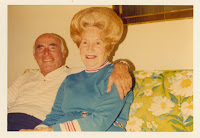 One way of showcasing your work and getting feedback from others around the world is to create a deviantART page. While your Blogger portfolio is a chronological, streamlined way for me to grade all of your projects, a deviantART page gets you attention, feedback, etc. It also provides a backup of your photography and allows you to connect with others who have similar interests or styles.
One way of showcasing your work and getting feedback from others around the world is to create a deviantART page. While your Blogger portfolio is a chronological, streamlined way for me to grade all of your projects, a deviantART page gets you attention, feedback, etc. It also provides a backup of your photography and allows you to connect with others who have similar interests or styles.After you have created your page, update your profile. You can use a picture of yourself or one of your projects as a profile picture if you would like.
Next, go to askgriff.deviantart.com and follow me. That will let me follow you back and I can send you a Llama badge for making it that far! :)
Next, upload your projects. Give good descriptions and choose the best category for each.
Finally, send me an email (griff@kvusd.org) with your deviantART page address.













































































